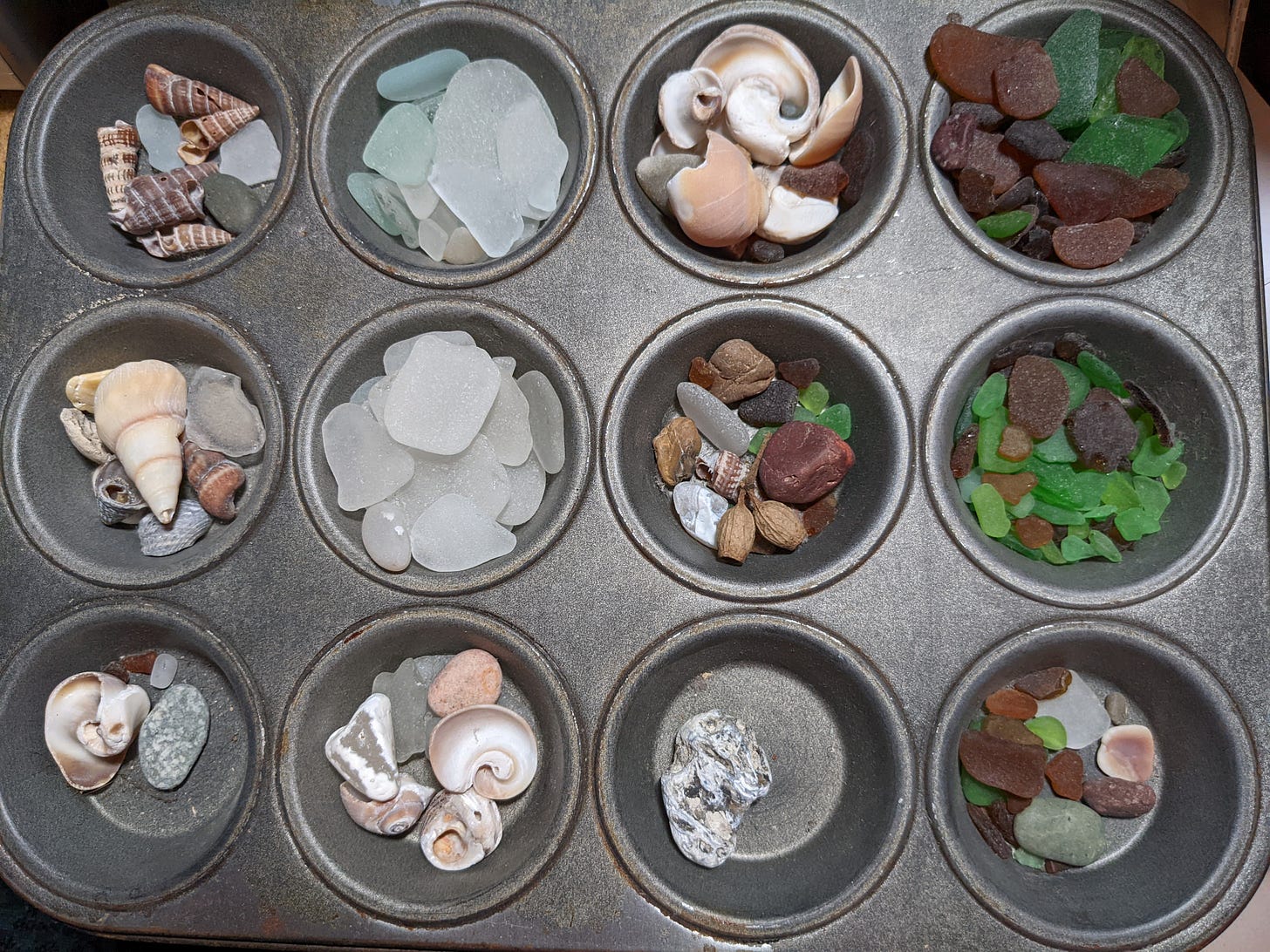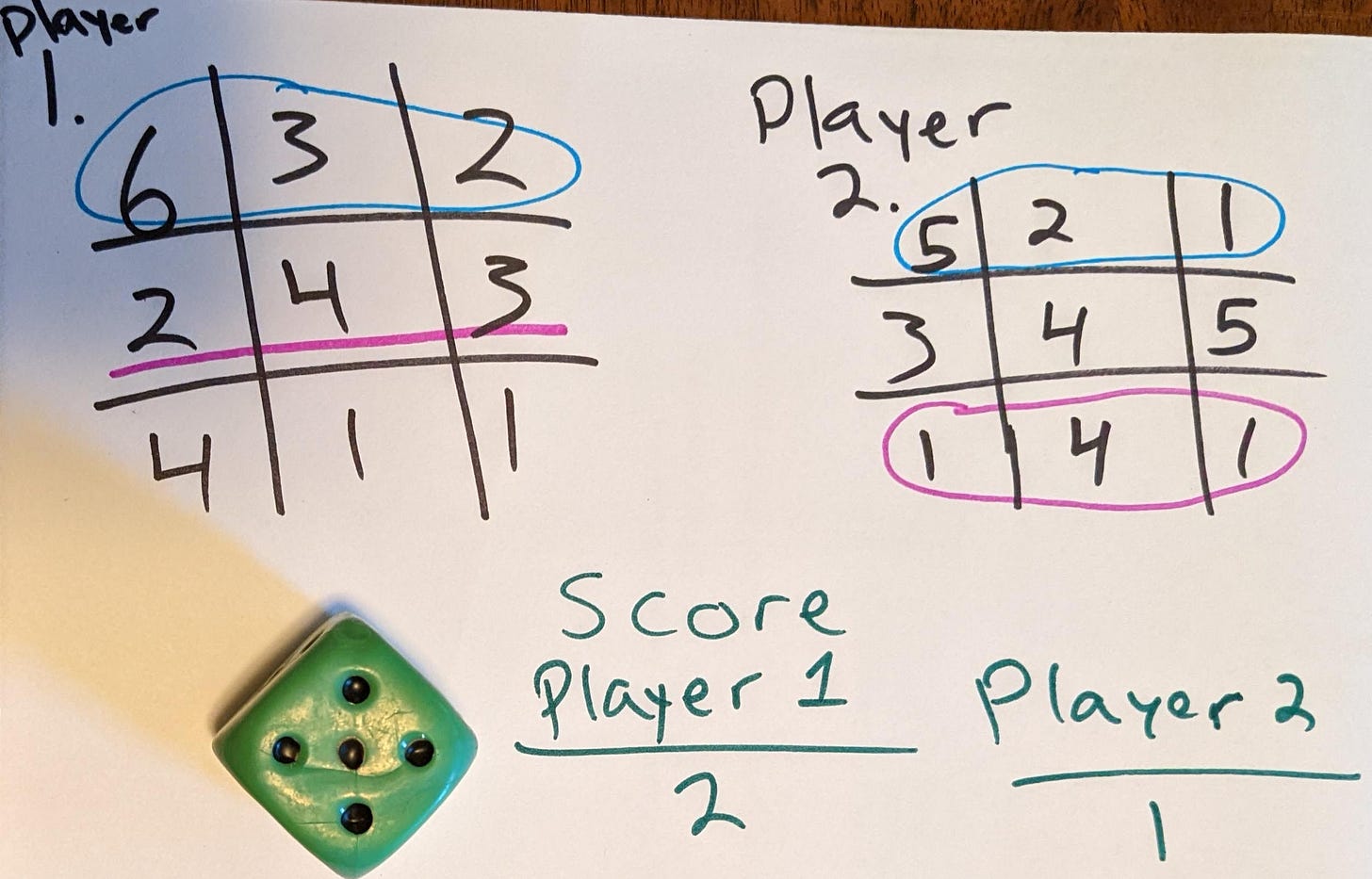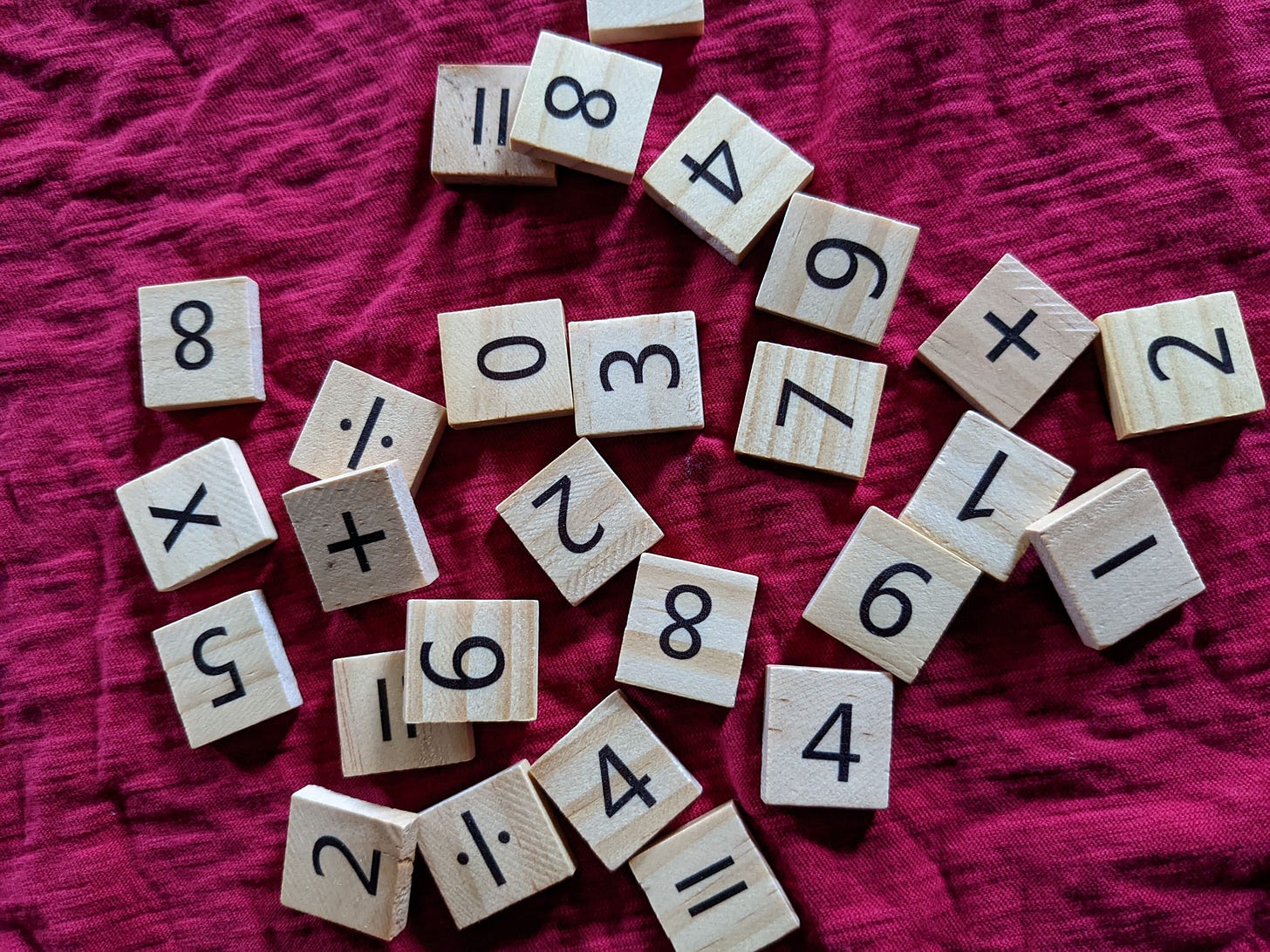What do you notice? What do you think? What do you wonder?
It is important to approach math with a sense of wonder and curiosity. We do not want our learners to say, as one second grade child said, “math is too much answer time and not enough learning time.” Practicing math skills is important, but let’s not make that the only math task. There are a wide variety of math activities we can provide to inspire wonder and curiosity in our learners. I recommend choosing activities from the following areas: games, routines, stories, open ended questions and visuals.
This newsletter will provide examples of these activities each week to help inspire you on your teaching journey. I will also periodically review teacher resources or curriculum that I have used during my teaching journey.
Game of the week:
Tic Tac Roll- version 1 (For learners who understand three digit numbers- modify with a grid of 6 squares for younger learners)
Instructions (you need a partner, paper, pencil or pen and a die.)
Each person draws a tic tac toe board
Roll your die 9 times filling in your board with the numbers you rolled.
Circle your highest 3 digit number and underline your lowest three digit number.
Compare your numbers with your partner. giver yourself two points if your high number is highest and one point if your low number is lowest repeat all steps until some one reaches 10 points.
Variations: Use an 8 sided die, or use a cube that you can write on to write numbers 4 through 9 in order to work with higher numbers. Ready for a challenge? Try making 4 digit numbers. Discuss using the following questions: What strategies did you use to try for bigger or smaller numbers as the game progressed? What was the biggest number you rolled during the game? What was the smallest? What is the difference between those two numbers?
Math Routine:
Start With… Get to…
Teacher selects two numbers for example: start with 9 get to 17. (For an older learner start with 48 get to 72, or start with 546 get to 696 counting by tens) Learner finds the two numbers on a hundreds chart or number line. Teacher asks “What do you notice? Student responds with their observations. Student counts from the lower number to the higher one. Variation: count backwards, use skip counting, select random number cards or tiles or roll some dice to determine the numbers.
Story of the week:
Only One by Mark Harshman
This is a beautifully illustrated counting book with a county fair theme. The author show how one thing may be made up on many things or several things. For example “There may be 100 patches but only one quilt.”
Open ended questions:
Measurement: Can you find two items that are about the same size but not the sam weight? Can you find two items that weigh the same but are different sizes? I filled up a container with 10 scoops of sand, what do you think the container looks like? Elsa built a building with 18 blocks, what might the building look like? I have a piece of string as tall as I am, what else can I measure with the string?
(Adapted from: Good Questions for Math Teaching; Why Ask Them and What to Ask by Peter Sullivan and Pat Lilburn)
Utilizing Visuals:
Show me 3 and 3, 6 and 6 and 12 and 12. What do you notice? (use blocks or counters to show the amounts or record on graph paper.) What do you think we should make next? How are they similar?
Look at the following photo:
What do you notice? What do you think? What do you wonder? How many true number sentences can you make with the numbers you see? Fill in the blanks… There are more ___ than ___. There is only one ___, ___, and ___.






